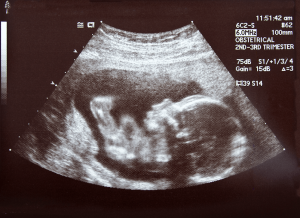Art and Culture
Traditionalists and Activists are Both Wrong About Sex and Gender
The clearest evidence for this lack of a distinction is the fact that most individuals are cisgender (individuals whose gender identity aligns with their biological sex).

Note: I had almost completed writing this essay when I became aware of President Donald Trump’s action to bar transgender individuals from serving in the United States military. This is blatant discrimination against the transgender community. As Sen. John McCain wrote following Trump’s announcement, “Any American who meets current medical and readiness standards should be allowed to continue serving. There is no reason to force service members who are able to fight, train, and deploy to leave the military—regardless of their gender identity. We should all be guided by the principle that any American who wants to serve our country and is able to meet the standards should have the opportunity to do so—and should be treated as the patriots they are.”
Wading into the turbulent rapids of the politics of sex, gender, and gender identity requires a life vest. Inevitably, one is bound to upset one or another political current, be it transgender rights or support for traditional gender roles. If I cannot hope to achieve a rapprochement between the two sides, I can at least try to anger both. But before I get into why many of today’s gender activists are misguided, I will first explain where traditionalists go wrong.
In support of transgender rights, and in opposition to reactionary ideologues intent on drawing battle lines across America’s public bathrooms, it is a fact that transgender identity cannot be dismissed as a whimsical choice made by some jaded, politically correct millennial.
True…Especially when you consider the fact that "transgender" is a made-up term to legitimize a lifestyle choice. #pretenders https://t.co/eTtbslxdJk
— Greg (@Prowlers_FFL) July 27, 2017
Nor can it simply be reduced to a mental disorder that is in need of immediate medical treatment. History and anthropology present us with numerous examples of individuals not conforming to traditional gender roles, from Roman emperors to entire social classes of people.
And in the scientific realm of sex development, it is well established that sex-typical (normal) development is not activated by a single, binary switch, but relies on a complex process regulated by genes, hormones, and biochemical receptors.
When it comes to genes, individuals may possess sex-chromosome numbers that differ from the standard XX (for females) or XY (for males). Klinefelter syndrome, for example, occurs when an individual possesses two Xs and one Y (XXY). Such an individual may develop a combination of masculine and feminine traits—which are both physical as well as psychological and behavioral.
Sex-typical development may likewise be obstructed when sex hormones fail to activate appropriate developmental cascades (scientific jargon for a series of chemical reactions that take place in crucial developmental periods such as puberty). In sex-typical males, the SRY gene on the Y chromosome triggers the release of testosterone, which enables the masculinization of the brain and body during the fetal stage of development. However, this process is hindered in individuals with androgen insensitivity syndrome. This is a condition where male individuals develop feminine physical and psychological traits because their androgen receptors have shut down. Androgen insensitivity is likewise not an all-or-nothing phenomenon; individuals may be only partially insensitive to androgens and, as a result, may exhibit only subtle feminine characteristics, if any at all.
Klinefelter syndrome and androgen insensitivity syndrome are two of the most common forms of sex-atypical development, but there are others. Male development, for instance, is governed by separate brain and body masculinization processes that occur prior to birth.1 Upon the release of testosterone, the enzyme 5α-reductase transforms it into dihydrotestosterone, which masculinizes the fetal body. The enzyme aromatase, in contrast, converts testosterone into estrogen, which, despite its reputation as a typically female hormone, works to masculinize the fetal brain. Either of these pathways can break down without affecting the other pathway, leading to the development of individuals with masculine bodies but not brains or masculine brains but not bodies.

What these conditions suggest is that the experience of being trapped in a body that does not match one’s psychological gender, an experience that is commonly reported by transgender individuals, is in some cases undergirded by developmental biology. They likewise suggest that the religious-Right’s insistence that transgender individuals are deluded is not borne out by the science.
Where Activists Go Wrong
But the science of sexual development is apolitical, and transgender activists are not immune to anti-scientific sentiment. For one, humans are a sexually dimorphic species, which means that, despite the complexity of sexual development, most humans can be divided into male and female forms. Even in the previously discussed cases of atypical sexual development, it is atypical combinations and degrees of male and female characteristics that are responsible. The claim that there are more than two genders—not to mention the more than 50 gender options that Facebook users can select for themselves—is biologically untenable. But there is an even deeper ignorance among activists; an ignorance that plagues much of today’s left-wing politics: ignorance of the inextricable link between culture and biology.
Gender feminists and transgender activists—at least the more extremist ones—are generally suspicious of the biological underpinnings of gender. To varying extents, they are informed by academics in the field of gender studies who claim that there is a separation between sex and gender.
In the category of sex are placed genes, hormones, and genitalia, whereas in the category of gender are placed sex differences in aggression, nurturing behavior, and even sex differences in sexual behavior—all presumed to be the products of socialization by societal forces.2 But there is a paradox here. If sex and gender are indeed separate entities, on what do transgender activists base their contention when they claim that gender identity is not a choice? I doubt they believe that entrenched transgender identity is a product of early childhood socialization, or Judith Butler’s concept of “performativity,” but this seems to be the only alternative if the influence of biology is ignored.
The separation of sex and gender is the modern day version of Cartesian dualism—the illusory separation between the mind and the body. Both notions are flawed in that both rely on a separation that is not there. Cartesian dualism falls apart with the realization that “mind matter” relies on “physical matter” such as neurons, neurotransmitters, and electrical impulses.

The dualism of sex and gender falls apart upon an encounter with the growing body of evidence on anatomical, physiological, and behavioral sex differences—differences that cannot be dismissed as products of social construction. Note, however, that just as it is sometimes useful to make a distinction between bodies and minds (notwithstanding the indelible connection between the two), there may be instances when it is useful to make a distinction between sex and gender. If one were discussing cultural products such as women’s high heeled shoes, or “men’s” and “women’s” bicycles, for example, framing the discussion in terms of gender differences would be the way to go.
But when it comes to differences between men’s and women’s brains and behavior, there is no hard-and-fast distinction between culture and biology.
The clearest evidence for this lack of a distinction is the fact that most individuals are cisgender (individuals whose gender identity aligns with their biological sex). The most liberal estimates suggest that transgender individuals make up only 0.5 to 0.6 percent of the US population.3 Although this in no way invalidates the struggle for transgender rights—which would still be a necessary struggle even if there were only one transgender person in the world—it does suggest that biological sex and gender identity correspond in the vast majority of individuals. If gender identity were completely separate from biological sex, we would expect a greater number of transgender individuals within the population—at least greater than half-a-percentage point.
Some might claim that gender-role socialization in restrictive societies explains the reduced number of transgender individuals. But this contention does not hold up well under scrutiny. Gender-egalitarian countries such as Sweden are similar to less gender-egalitarian countries when it comes to differences in toy preferences between boys and girls.4 That such differences run deeper than cultural rearing practices is also suggested by the finding that male rhesus monkeys, like their human counterparts, are more likely to play with trucks than female rhesus monkeys,5 and when juvenile female chimpanzees cannot get their hands on dolls, they cradle sticks instead.6
However, the most interesting indictment of the socialization-of-gender hypothesis that I have come across, was not really an indictment at all. Rather, it was an indictment of the direction of socialization effects commonly claimed by gender studies researchers. Specifically, girls who experienced the highest level of androgen exposure before birth were slightly more likely to exhibit masculine behaviors if they were encouraged to be feminine in childhood.7 This suggests that traditional gender-role socialization has no effect on—and may even exacerbate—gender-noncomformity among individuals with a hormonal profile that is atypical. If there are still doubts about the limits of gender socialization, however, the sad case of David Reimer should allay them.
A Biologically Informed Activism
As with the struggle for gay rights, the struggle for transgender rights should not pivot on whether science discovers all, or any, of the biological correlates underlying gender identity. Even if gender identity is a choice that is completely unrelated to sex hormones and reproductive physiology (a stance that, oddly enough, is shared by both the religious-Right and the proponents of sex and gender dualism), the legitimacy of the struggle for transgender rights would not falter.
But the need for both sides to get the science right carries practical consequences for the lives of millions. When religious conservatives posing as experts deny individuals their right to identify as they choose, they are dismissing the experiences of transgender individuals and the science of gender identity. On the other hand, when transgender activists bully legitimate researchers to suit their political agenda or enshrine laws that compel the adoption of recently-invented gender pronouns, scientific inquiry and free expression are ultimately sacrificed on the altar of political correctness.
Endnotes
[1] Panksepp, J. (1998). Affective Neuroscience. Oxford University Press: New York, NY, p. 233.
[2] For an evolutionary rebuttal to the contention that sex differences in aggression, nurturance, and sexual behavior result from socialization, see: Baron-Cohen, S. (2005). The empathizing system: A revision of the 1994 model of the mindreading system. In B. J. Ellis, & D. F. Bjorklund (Eds.), Origins of the social mind: Evolutionary psychology and child development (pp. 468-492). New York: Guilford; Clark, R. D., & Hatfield, E. (1989). Gender differences in receptivity to sexual offers. Journal of Psychology and Human Sexuality, 2, 39-55; and Daly, M., & Wilson, M. (1998). Homicide. Hawthorne, NY: Aldine de Gruyter.
[3]Crissman, H. P., Berger, M. B., Graham, L. F., & Dalton, V. K. (2017). Transgender demographics: A household probability sample of US adults, 2014. American Journal of Public Health, 107, 213-215.
[4] Nelson, A. (2005). Children’s toy collections in Sweden—a less gender-typed country? Sex Roles, 52, 93-102.
[5] Hassett, J. M., Siebert, E. R., & Wallen, K. (2008). Sex differences in rhesus monkey toy preferences parallel those of children. Hormones and Behavior, 54, 359-364.
[6] Kahlenberg, S. M., & Wrangham, R. W. (2010). Sex differences in chimpanzees’ use of sticks as play objects resemble those of children. Current Biology, 20, R1067-R1068.
[7] Udry, J. R. (2000). Biological limits of gender construction. American Sociological Review, 65, 443-457.






